Camp cookware, not an exciting topic but nevertheless an important one in bushcraft, and particularly if you want to enjoy your time in nature. Over the past 3 years, I’ve bought or tried a vast range of stoves, pans, plates, cups and cutlery in search for that elusive perfect cook set.
I’ve tried everything from aluminum to titanium, from alcohol burners to fireboxes, and what I’ve learned is that they all have their place.
What’s the best? Well, that depends on what you’re doing. But for the purpose of this post I’m going to be wild camping in the woods, cooking a proper evening meal and drinking tea … and possibly some wine or beer. That’s what I do most weekends when camping.
Starting with pans. I’ve now settled on an MSR Alpine frying pan. It’s constructed of stainless steel so its durable, has an aluminum plated sandwiched in the base so that it distributes heat well, and has a detachable handle. At 20cm in diameter it’s almost the ideal size.

The right pan for the job
I’ve cooked steaks, rice, eggs, full breakfast and just about everything else in it. You can cook over a gas burner, Trangia, Firebox or open fire without fear of melting the pan (like aluminum), or without having hot spots and burning the contents (like titanium).
It doesn’t have a non-stick coating, but being seasoned stainless steel not much sticks to it. I deliberately chose stainless steel as I don’t like non-stick coatings. They tend to be far less durable, and also toxic when ingested i.e when the coating flakes off in your food.
I also use an inexpensive spatula and spoon set bought at one of the local supermarkets. It makes the cooking thing like steaks or scrambled eggs so much easier.
Quite often I take an MSR alpine 14cm pot with me, which is great to have for cooking rice or pasta. Sometimes you just need the versatility of having two pans. It’s also great for stowing equipment in.
For plates, I have two Sea to Summit folding plates. The large one I use for my main meal, and the small one for cereal or soup. The large plate also doubles as a lid for the frying pan.
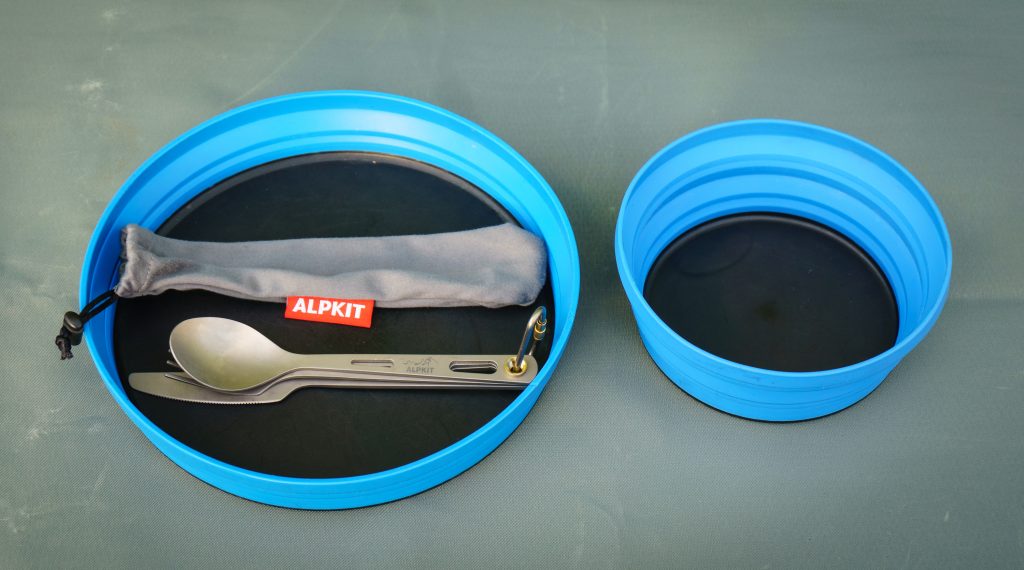
Plates have multi-use, and a real knife, fork and spoon makes a huge difference
Cutlery is a fascinating subject for some, with most people opting to use a spork – that’s an implement with a fork at one end and a spoon at the other. I’ve got several of these, but recently purchased a TiMigos titanium 3 piece set from Alplkit. There’s nothing quite like having a real knife, fork and spoon. Aplkit’s is lightweight, comfy and cheap at only £13. Definitely worth the money. It’s also held together by a nifty little brass screw, cog and loop.
For tea making, boiling water and drinking out of, I use a pathfinder stainless steel mug with lid, and a pathfinder bottle stove. It’s a wee stainless platform that you can heat water in the mug with by using a Trangia burner, burning some twigs under it, or by placing it on top of the embers of a fire.
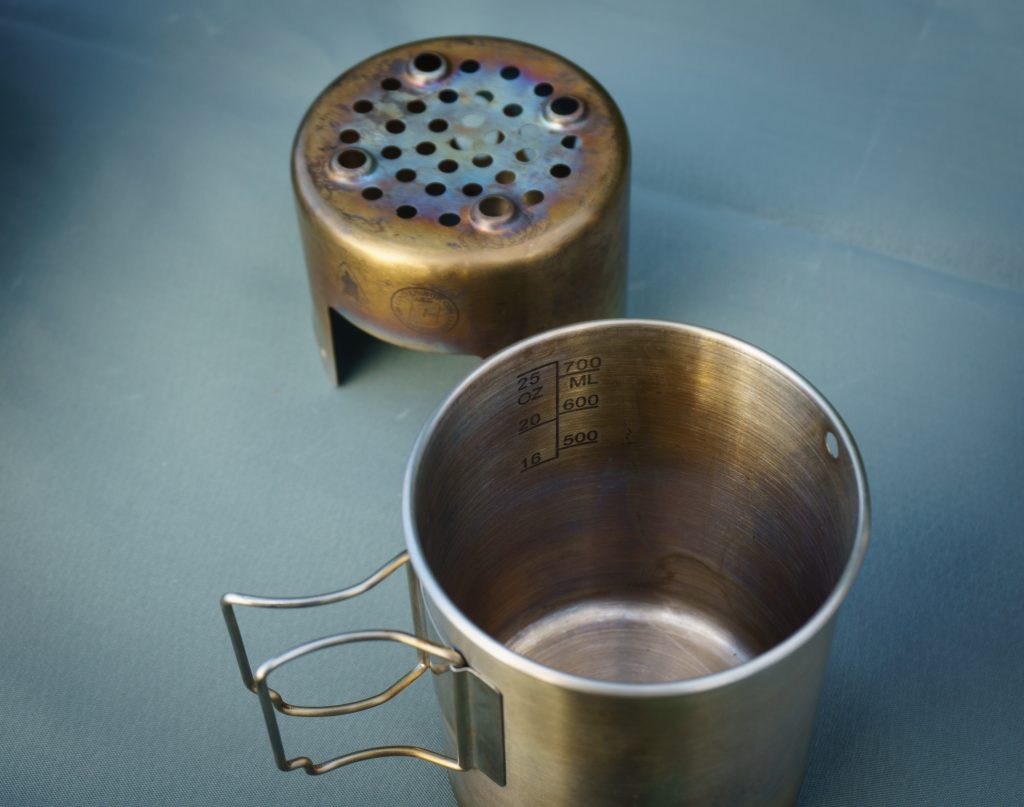
I’m most impressed with it. I also have a Nalgeen stainless steel bottle that nests inside the mug, and then all three sit inside a 5.11 bottle pouch. To add to its versatility I’ve also got a spring holder that sits in two holes in the mug, or inside the bottle neck so that these can be suspended over a fire for boiling water.
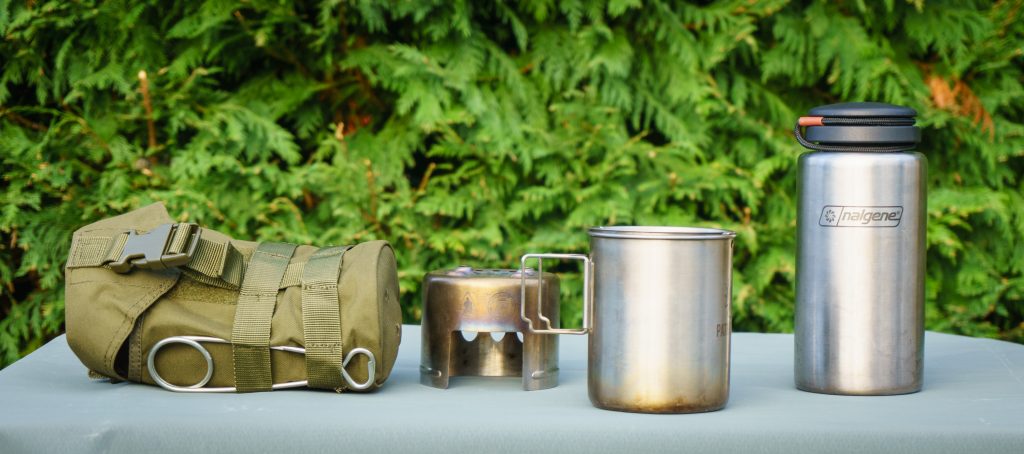
Time for a brew
And finally accessories – these are essential to enjoying a great outdoor cooking experience, I carry salt and pepper in a small double-sided container, some groundnut oil and washing up liquid in small Nalgene bottles, and a roll of kitchen paper. Everything fits inside a drybag and into my backpack.
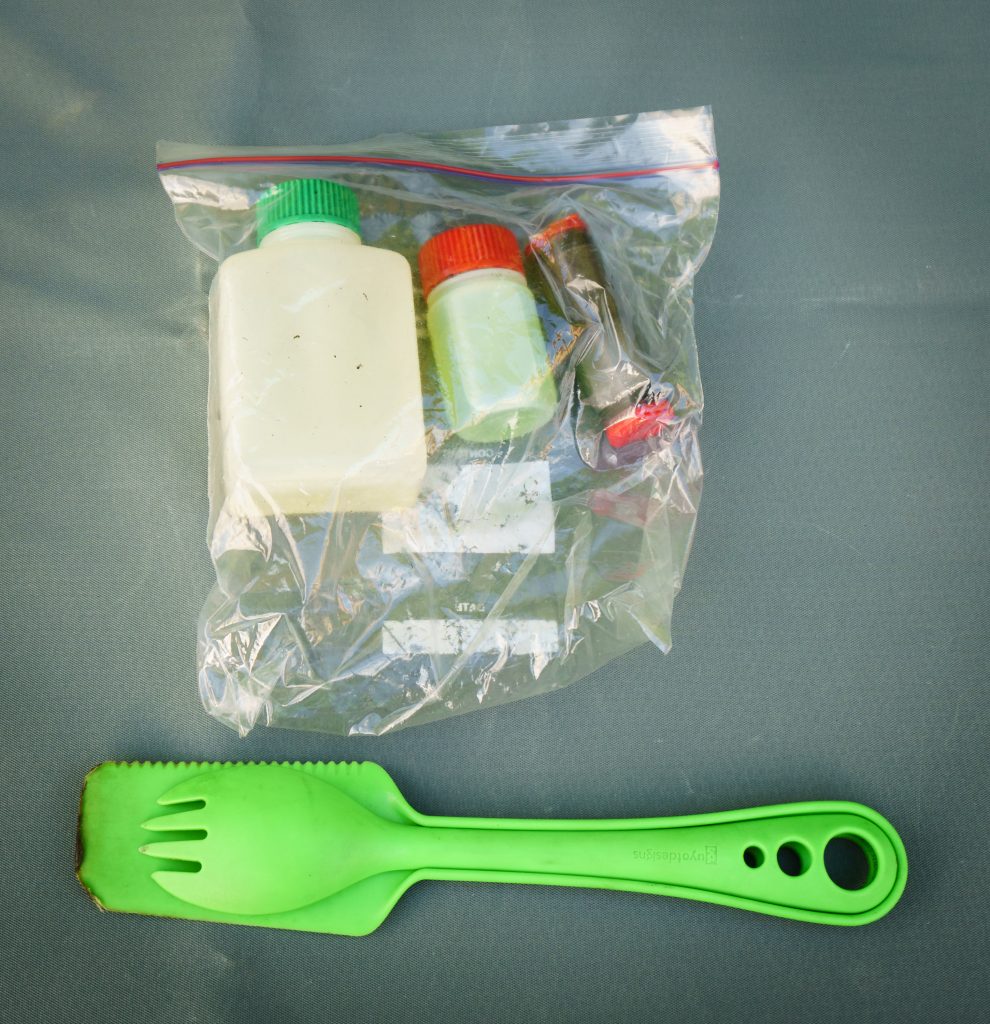
Don’t forget the accessories
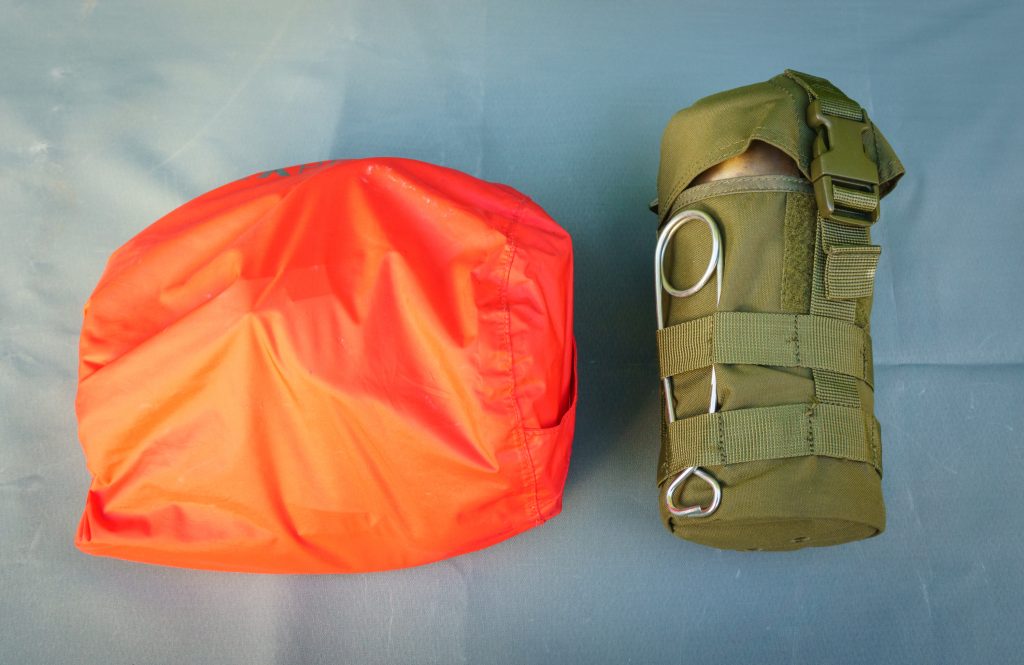
With my current cook set, I can cook up a gourmet meal with ease. Yes, there are lighter options available and I’ve tried most of them, but my key criteria are ease of use, durability, flexibility, and cost-effectiveness. I believe I have that in my current setup without spending a fortune.
